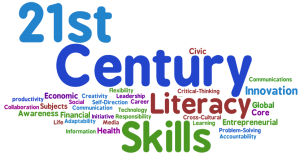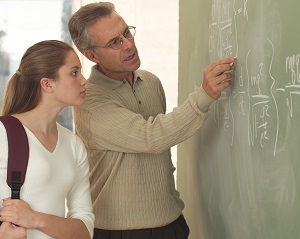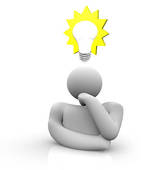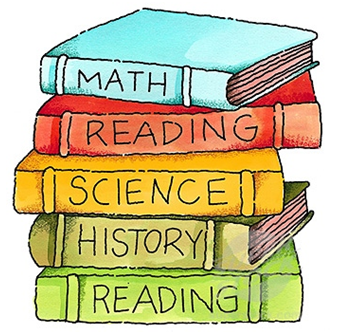Are Libraries in India Ready for the 21st Century Students?
 We ushered in the new millennium by a radical technological revolution. Presently, we live in a complex, global, diverse, and media-saturated society. This technological revolution has its share of positives and negatives. Present-day kindergarteners will retire by the year 2067. We have no clue as to how the world will look in the next five years, let alone 60 years. Yet, it is our responsibility to prepare our students for optimum living in that world.
We ushered in the new millennium by a radical technological revolution. Presently, we live in a complex, global, diverse, and media-saturated society. This technological revolution has its share of positives and negatives. Present-day kindergarteners will retire by the year 2067. We have no clue as to how the world will look in the next five years, let alone 60 years. Yet, it is our responsibility to prepare our students for optimum living in that world.
Our students are confronted by a host of issues, including global warming, poverty, health problems, famine, population explosion and several other social and environmental issues. These issues create a need for students to communicate and create change on a personal, social, economical, and political level across local, national, and global boundaries. Kindergarten children, too, can make a remarkable difference in the world through participation in real-world, real-life, service-learning projects. To get your voice heard, you are never too young or old. By creating change, you can make this world a better place. Improvement in technology and the resulting globalization provide a plethora of possibilities for giving an impetus for new discoveries and developments, including new energy forms, advancement in the medical field, restoration of regions ravaged by environment, communications, and space and ocean exploration. The possibilities are simply unlimited.
21st Century Skills
 21st century schools and colleges have recognized the vital need for the development of 21st century skills. There is a growing belief that authentic education takes into account the “whole person” or the “whole child.” At the same time, curriculum design and professional development should not be limited to workplace readiness.
21st century schools and colleges have recognized the vital need for the development of 21st century skills. There is a growing belief that authentic education takes into account the “whole person” or the “whole child.” At the same time, curriculum design and professional development should not be limited to workplace readiness.
21st century skills can be learned through a curriculum that is integrated, interdisciplinary, and project-based. Some of the skills are mentioned below:
-
Critical thinking and solving of problems
-
Collaboration across networks and leading through influence
-
Adaptability and agility
-
Taking initiative and entrepreneurialism
-
Excellent verbal and written communication
-
Access to and analysis of information
-
Curiosity and imagination
School, Teacher, and Learner for the 21st century:
 How can education be molded to meet the requirements of students in the 21st century world? What is the definition of terms such as: School, Teacher, Learner, and Curriculum? 21st century schools will be laced with a curriculum that is project based, which is aimed at engagement of students to tackle real-life problems, issues critical to the human race, and questions that are of relevance.
How can education be molded to meet the requirements of students in the 21st century world? What is the definition of terms such as: School, Teacher, Learner, and Curriculum? 21st century schools will be laced with a curriculum that is project based, which is aimed at engagement of students to tackle real-life problems, issues critical to the human race, and questions that are of relevance.
This is a significant transformation from the earlier factory-model education. This means abandoning the teacher-centered, textbook-driven, paper and pencil schooling. It signals a novel way to understand the term “knowledge,” which is newly defined for the “educated” individual. There is a requirement of a new way to design and deliver the curriculum.
School: A school will now be seen as a “nerve center” rather than merely a “building.” The walls will be transparent and porous, thereby effectively connecting students, teachers, and the community to treasure of knowledge existing in the world.
 Teacher: Teachers need to adopt a main role as a knowledge and information dispenser and an orchestrator of learning. Teachers are needed to assist students in transforming information to knowledge and knowledge to wisdom. The 21st century will need generation of knowledge and not just delivery of information. Therefore, schools will need to facilitate a culture of inquiry.
Teacher: Teachers need to adopt a main role as a knowledge and information dispenser and an orchestrator of learning. Teachers are needed to assist students in transforming information to knowledge and knowledge to wisdom. The 21st century will need generation of knowledge and not just delivery of information. Therefore, schools will need to facilitate a culture of inquiry.
Learner: In previous times, a learner was a young individual who attended school, spent a specific amount of time in several subjects, received grades, and finally graduated. However, today, learners are seen in a whole, new context:
-
We must engage the interest of the students by enabling them to see that their learning process will effectively prepare them for real-world life.
-
We must encourage curiosity, which is crucial to lifelong learning.
-
Teaching methods need to be flexible
-
We need to excite learners to become extremely resourceful, so that they continue learning even after their graduation or schooling is over
Therefore, can we have a rough sketch as to how will schools appear? What will the curriculum be? How will the 21st century curriculum be efficiently organized, and what will be its impact in designing and building schools? The other questions need to be answered include:
-
How do we perform an assessment of students?
-
What will be the method of purchasing resources?
-
How do we get access to new technologies and how do we utilize them?
-
What does all this translate to in an epoch of standardized texting and accountability?
 Imagine a school where all students are so thrilled about learning that they cannot wait to get in. Imagine minimal disciplinary problems as the students are thoroughly absorbed in their studies. Imagine parents making calls, sending letters, or approaching the school to inform authorities about the revolutionary changes they are seeing in their children: newly-found excitement and enthusiasm for attending school, a burning desire for project work, and carrying out research and writing post school hours and on weekends. Imagine your students making tremendous exponential growth in the basic skills such as reading, writing, listening, speaking, researching, exploring, and more. The above scenario is possible. It has occurred, and is occurring in several schools across India. And there is substantial evidence of schools obtaining similar results through implementation of a 21st century curriculum.
Imagine a school where all students are so thrilled about learning that they cannot wait to get in. Imagine minimal disciplinary problems as the students are thoroughly absorbed in their studies. Imagine parents making calls, sending letters, or approaching the school to inform authorities about the revolutionary changes they are seeing in their children: newly-found excitement and enthusiasm for attending school, a burning desire for project work, and carrying out research and writing post school hours and on weekends. Imagine your students making tremendous exponential growth in the basic skills such as reading, writing, listening, speaking, researching, exploring, and more. The above scenario is possible. It has occurred, and is occurring in several schools across India. And there is substantial evidence of schools obtaining similar results through implementation of a 21st century curriculum.
What exactly is 21st century curriculum?
 21st century curriculum has specific attributes. It is interdisciplinary, research-driven, and project-based. It is connected to the community locally, state wise, nationally, and globally. In some instances, students are collaborating with individuals around the world with regard to various projects. The curriculum includes higher-order thinking skills, multimedia, technology, multiple intelligences, and multiple literacies of the 21st century. Service learning is a crucial component.
21st century curriculum has specific attributes. It is interdisciplinary, research-driven, and project-based. It is connected to the community locally, state wise, nationally, and globally. In some instances, students are collaborating with individuals around the world with regard to various projects. The curriculum includes higher-order thinking skills, multimedia, technology, multiple intelligences, and multiple literacies of the 21st century. Service learning is a crucial component.
The classroom is expanded to involve the larger community. Students are primarily self-directed and work interdependently and independently. The curriculum and medium of instruction are designed in such a way as to challenge students and make them enjoy while learning subjects like Physics, Mathematics etc. The curriculum is neither fragmented nor textbook driven but is thematic. Content is not taught as an end in itself; however, students learn through research and proper application of their projects. Textbooks, too, can be a useful resource.
Knowledge is not rote learning of facts and figures, but is built via application and research, and has a connection with prior knowledge, passions, talents, interests, and personal experiences. The content and skills become relevant and in demand because students need this information for project completion. The skills and content are not ends in themselves but have an application within the curriculum context. Assessment changes from regurgitation of facts learned by rote and disconnected processes to demonstration of understanding via application in several contexts. Real-world audiences are a crucial part of the process of assessment. The same applies for self-assessment.
21st Century Libraries:
Libraries are the fundamental icons of higher education. Clock towers, leafy quadrangles, and stadiums may feature on your college home pages; however, it is the library that is involved in capturing the academic heart of your campus, both figuratively and physically.
The Traditional Library
 While information can be derived from various sources, the library remains the pivotal location where new technologies can be used in combination with traditional sources of knowledge in order to support the educational and social patterns of learning, research, and teaching. However, if the library has to continue its dominant role in school and college learning process, it has to evolve to meet the demands of 21st century learning and continuously-changing learning modes and pedagogies. In addition, modern libraries have to cater to the needs of teachers, instructors, and students.
While information can be derived from various sources, the library remains the pivotal location where new technologies can be used in combination with traditional sources of knowledge in order to support the educational and social patterns of learning, research, and teaching. However, if the library has to continue its dominant role in school and college learning process, it has to evolve to meet the demands of 21st century learning and continuously-changing learning modes and pedagogies. In addition, modern libraries have to cater to the needs of teachers, instructors, and students.
Challenges to the Traditional Library
 In the 21st century world of smartphones, Kindles, and iPads, it is interesting to note that a small percentage of students still opt for traditional libraries for reading and studying. However, this number is small and may soon die out. For previous generations, the library had an aura of learning and scholarship. Whenever, a big project was assigned, students had only one destination in mind: the library. However, today, information is digital and available on a 24/7 basis. With a few clicks of the mouse, countless books can be downloaded.
In the 21st century world of smartphones, Kindles, and iPads, it is interesting to note that a small percentage of students still opt for traditional libraries for reading and studying. However, this number is small and may soon die out. For previous generations, the library had an aura of learning and scholarship. Whenever, a big project was assigned, students had only one destination in mind: the library. However, today, information is digital and available on a 24/7 basis. With a few clicks of the mouse, countless books can be downloaded.
How to Ignite Interest in Students for Using Offline Libraries?
 Libraries at colleges and universities are generally looked upon as stifling book warehouses; therefore, the need of the hour is to reinvent themselves, their image, and outlook. There should be a seamless blend of space, furniture items, and other tools that aid active learning. The ideal 21st century library is that which supports both individual and collaborative learning, offers coaching and assistance to students to acquire new skills, and allows unrestricted access to content in each and every form.
Libraries at colleges and universities are generally looked upon as stifling book warehouses; therefore, the need of the hour is to reinvent themselves, their image, and outlook. There should be a seamless blend of space, furniture items, and other tools that aid active learning. The ideal 21st century library is that which supports both individual and collaborative learning, offers coaching and assistance to students to acquire new skills, and allows unrestricted access to content in each and every form.
Problems Faced By Libraries in India
-
Inadequately-trained librarians
-
Inadequately-equipped libraries
-
Usage of digital information sources
-
Various library softwares
-
Poor infrastructure
-
A decrease in rate of information literacy
-
Students’ access to Kindles, tablets, and smartphones
How to Make Libraries in India Ready for the 21st century:
 Design an excellent range of library spaces that foster social learning students and their peers, in pairs as well as groups. Support the librarian’s expanding and evolving role as educator, collaborator, IT service provider, and content expert.
Design an excellent range of library spaces that foster social learning students and their peers, in pairs as well as groups. Support the librarian’s expanding and evolving role as educator, collaborator, IT service provider, and content expert.
Ensure optimum performance of informal spaces by greater flexibility and user control. Come up with a plan with regard to adjacencies that have recognition of the range of activities that take place for the smooth functioning of the library. Allocate spaces for individual security, comfort, and concentration. Offer spaces that improve the students’ awareness of library resources, while simultaneously providing access.
Nearly 90% of learning takes place outside the classroom, especially when it comes to those vital skills for student development, such as:
-
Clarity in thinking
-
Clarity in communication
-
Being articulate and persuasive
-
Ability to collaborate and work in groups
The library needs to be a knowledge hub, where the learning that takes place beyond the four walls of the classroom reinforces what was learned during regular lectures. This will help students acquire new skills that will enhance the quality of their lives and give them a chance of securing a lucrative job.
The library in 21st century India is under serious threat. First, not many students have the inclination to read. Second, those who have the inclination to read are opting for digital learning through e-books thanks to the popularity of Kindles, smartphones, and tablets. Third, librarians are not equipped with the modern skills that cater to that small percentage of regular visitors. However, all this can be changed through the steps mentioned above and if there is a strong will to make things happen and get things done.
View courses by askIITians


Design classes One-on-One in your own way with Top IITians/Medical Professionals
Click Here Know More

Complete Self Study Package designed by Industry Leading Experts
Click Here Know More

Live 1-1 coding classes to unleash the Creator in your Child
Click Here Know More
